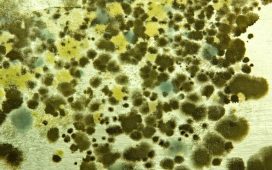The bizarre desert “fairy circles” that have mystified Australians for hundreds of years has finally been solved by researchers.
From unexplained formations to human made oddities that can be seen from space, here are some of the strangest things found on Google Earth.
The mysterious patches of bare earth can be found across deserts in Australia.
So-called fairy circles are distinct patches of clear soil found in desert grass, The US Sun reports.
A worldwide discussion was sparked back in the 1970s when they were first recorded by scientists in Southern Africa’s Namib desert.
Scientists from around the globe agreed in 2016 that the polka dot spots in the Australian landscape were caused by spinifex plants competing for water and nutrients.
But Indigenous Australians have insisted the patches pop up as a result of spinifex termites burrowing beneath the ground.
Fairy circles are patches of bare earth found in desert grass. Picture: SWNS
Scientists have now admitted in a study published in Nature Ecology & Evolution that researchers “barely considered the existing knowledge” of Indigenous people when concluding previously.
Dr Fiona Walsh, one of the scientists who took part in the study, told the West Australian: “Aboriginal people told us that these regular circular patterns of bare pavements are occupied by spinifex termites.
“We saw similarities between the patterns in Aboriginal art and aerial views of the pavements and found paintings that have deep and complex stories about the activities of termites and termite ancestors.”
Fairy circles were used by Indigenous Australians in the past as a way to find food sources.
Martu elder Gladys Bidu said: “I learnt this from my old people and have seen it myself many times. We gathered and ate the Warturnuma [flying termites] that flew from linyji.”
She said her ancestors also used the rock hard circles to break open and crush seeds for use in food.
Fairy circles were used by Indigenous Australians in the past as a way to find food sources.
Drone photograph of ‘fairy circles’ in spinifex on Nyiyaparli people’s country, east Pilbara, Western Australia. Photo by Dave Wells, Author provided
Researchers surveyed areas in WA’s Pilbara region as well as patches in Newhaven, Victoria.
Dr Walsh added: “[This] provided alternative scientific evidence to the dominant international theory explaining the fairy circle phenomenon in Australia.
“The water-holding characteristics of termite pavements were unknown to desert scientists until we recognised clues in the stories of our Aboriginal colleagues and Aboriginal art.
“Aboriginal people refined their encyclopaedia and authoritative knowledge when living continuously on this continent for at least 65,000 years and their knowledge is critical to improving ecosystem management and in understanding and caring for Australia’s desert.”
This article originally appeared on The US Sun and was reproduced with permission











